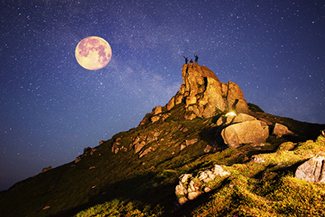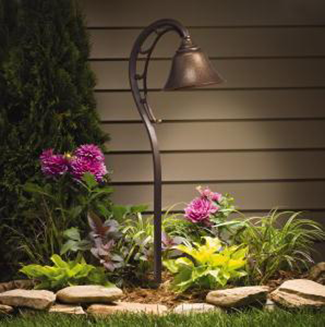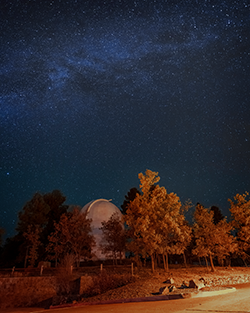Let Dark Skies Rule the Night!
 22 September 2020
22 September 2020 

Keeping Arizona Night Skies Bright with Stars
"Gazing into space is a favorite past time for all and should be available no matter where you live!" - Rosie
 What do Arizona communities of Camp Verde, Flagstaff, Cottonwood, Sedona and Fountain Hills all have in common? They are all officially designated as International Dark Sky Communities by the International Dark-Sky Association (IDA). These communities, and others, have come together to preserve dark skies as a treasure.
What do Arizona communities of Camp Verde, Flagstaff, Cottonwood, Sedona and Fountain Hills all have in common? They are all officially designated as International Dark Sky Communities by the International Dark-Sky Association (IDA). These communities, and others, have come together to preserve dark skies as a treasure.
Many of us take for granted that the moon, stars and planets will continue to dance in space for eternity. Even If we live in a brightly lit city, we know the vastness of the universe exists and will be available to inspire us on our next camping trip. But there are those who are working to return the night sky to everyone no matter where they live. It reminds us of Teddy Roosevelt's insight when he embraced and doubled the National Park System. He realized that if we didn't protect the great outdoors, they would not be there in the same condition for future generations. While light will not destroy the heavenlies, it hides us from their inspiring views. Did you know that there are kids who live in cities who have never seen the milky way or seen the constellations for themselves and only know of them through science books or documentaries like Planet Earth?
If the idea of being able to see the constellations from your own backyard appeals to you, there are some simple things that can be done by homeowners to cut down on the overabundance and often wasted energy of night lighting. The IDA reminds us that lighting should only be on when needed and only light the area that is needed. In addition, it should be no brighter than needed, minimize blue lights, and use fully shielded lights. For Example:
 Floodlights | Aim them downward as much as possible. When using them for motion sensors aim them at spaces near the house. They don't need to detect movement from passersby or blowing branches.
Floodlights | Aim them downward as much as possible. When using them for motion sensors aim them at spaces near the house. They don't need to detect movement from passersby or blowing branches.- Walkway lights | Replace fixtures with fully shielded styles... there is less light but with the absence of glare you will be able to see better in most instances.
- Porch/garage lights | Use fixtures that aim the light downward and use smaller bulbs with an amber tone to reduce glare.
- Bulb types | Light choices have come a long way.
- Choose bulbs that are lower wattage.
- Avoid white or blue bulbs choosing warmer tones like amber.
- Choose smaller bulbs that don't hang below the edge of fixtures.
It is easy to understand why the IDA has been welcomed into Arizona in communities, cities, neighborhoods and state and national parks. Our wide-open spaces reveal ions of sky 'real estate.'
The designation of Dark-Sky by the IDA can be attained by any city, town or municipality, state or national park, but does not need to be an incorporated area and can be a community or a neighborhood. The IDSC was founded in 2001 to fulfill its stated purpose: to protect the night sky from light pollution. Their five main goals are:
- To identify communities with exceptional commitment to and success in pursuing dark sky preservation and restoration, and their promotion of quality outdoor lighting.
- To promote improved outdoor nighttime quality of life for residents and visitors.
- To support protection of human health, nocturnal habitats, public enjoyment of the night sky and its heritage, and/or areas ideal for professional and amateur astronomy.
- To provide local, national, and international recognition for such communities
- To promote the ideals of the International Dark-Sky Association (IDA) by encouraging communities to identify dark skies as a valuable community asset and aspiration.

Bob, of Statewide Lighting, a Rosie-Certified Company, says that many of his customers are familiar with the Dark Sky movement and are shopping for outdoor light fixtures that comply with dark sky requirements.
The application process to achieve the IDA certification as a community is not a halfway kind of endeavor. To achieve this designation takes hours of commitment to educate the public, bring them in line with the IDA goals and then to put them into practice.
The requirements for the designation are hard fast rules, requiring those who attain it to resubmit for acceptance each year if they are to maintain the status. The entity applying must embrace a quality lighting policy with many facets including:
- Full shielding (shields that direct light downward) of lighting fixtures over 1000 lumens
- Restriction on the amount of unshielded lighting
- Regulations for new installations of publicly owned lighting
- Restrictions on the installation and operation of lighted signs including the illumination levels and the time they are permitted to be on.
- Restrictions on athletic or outdoor recreational fields regarding the amount of time the field lights are allowed to be on and how late.
There must also be a community wide commitment to dark skies and quality lighting demonstrated by specific community education and involvement.
Did you know that the very first International Dark Sky City in the world was Flagstaff in 2001? Its protection of the night skies was awarded the certification the same year the IDA was founded.
Flagstaffs expansive sky drew astronomer Percival Lowell to the area in 1884 long before there was such a thing as the IDA and while Flagstaff was still a territory. An area labeled Mars Hill was designated for an observatory in his name.

The effort to protect the night sky began with an ordinance in 1958, followed by lighting restriction in 1973 and 1988. The cities commitment to keeping the sky dark was challenged in 1988 when the Yellow Freight Company submitted an application to open a 7-acre, well-lit truck yard in a local business park. The battle to maintain the integrity of the night skies and accommodate the trucking company involved a lot of negotiation and community involvement. In the final outcome the Yellow Freight company added acreage and decreased lighting to accommodate the ordinance. Flagstaff has continued to successfully protect its dark sky through the years.
Author David S F Portree tells the story of Flagstaffs journey to stay in the dark well in award winning article Flagstaff's Battle For Dark Skies. In his conclusion he states: "battling light pollution is, deep down, an attempt to maintain contact with something bigger than humanity. Infinite space comes down to Earth at night unless stray, trivial light banishes it beyond our awareness."
With the world-renowned work done at Lowell Observatory, including the discovery of Pluto, it is easy to see why dark skies are important in Flagstaff. Dark skies are also worth preserving for the well-being and inspiration all of us who call earth home.
As the technology in lighting continues to improve, it will allow us a closer connection to the night sky through better, more efficient lighting.
###
Photo Credits:
- Statewide Lighting
- Shutterstock
RELATED CONTENT:
- Resource: International Dark-Sky Association
- Resource: Lowell Observatory
- Resource: Flagstaff Dark Skies Coalition
- Blog: Can I Add Security Lighting Without Raising My Energy Bill?
- Blog: What You Need To Know To Buy A Light Bulb
- DIY FAQ: Lighting the Way To Home Security
- DIY FAQ: Backup and Emergency Lighting
- Podcast: What You Need to Know to Buy a Light Bulb
Print this page
recent post
- Duck, Duck, Duct! How Often Should Ductwork Be Cleaned?
- Vinyl vs. Fiberglass Windows: Which Is The Better Choice Of Replacement Window?
- We May Be The Grand Canyon State, But The Rocky Mountains Are Important For Arizona
- Welcome to Arizona! Things A Newbie to Arizona Should Know
- The Pros & Cons of Buying A Flipped House
- Getting In On The Ground Floor
- Why It’s More Critical Than Ever To Get Your AC Serviced Before Summer
- The Reality of Remodeling
- What To Look For When Comparing Your Roofing Quotes
- What To Expect When Buying New Windows & Doors
